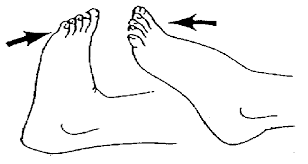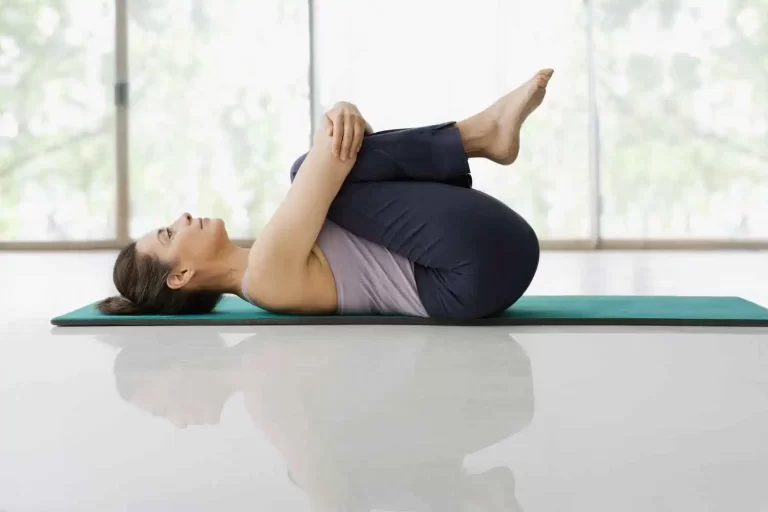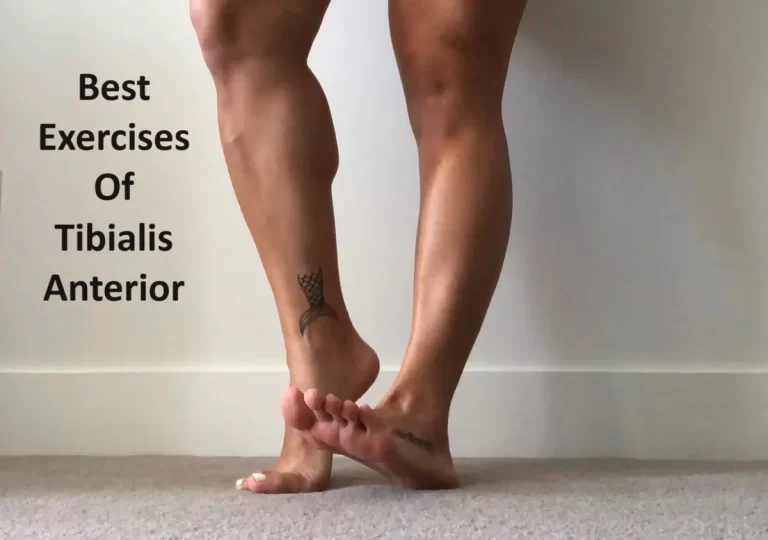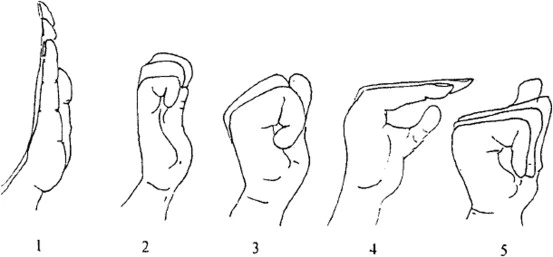Ankle Joint Range of Motion Exercise
What is the Ankle Range of motion exercise?
Ankle Range of motion exercise is a great way to improve the movement of the Ankle and It can be Active, Passive, or active assisted range of motion exercise.
The exercise mentioned here is meant to enhance the ankle joint range of motion. The arrangement of the bone surfaces inside a joint, the joint capsule, ligaments, tendons, and the muscles that work on the joint all have an impact on this movement.
There are three main types of exercises to improve ankle range of motion.
- Passive range of motion
- Active assisted range of motion
- Active range of motion
How do we assess an ankle’s range of motion?
In order to measure an angle from the joint’s axis, both devices make use of a stationary arm, protractor, fulcrum, and movement arm.
Additionally, the lumbar range of motion and other particular body areas can be measured with tape measures.
Normal range of the ankle joint
- 0 to 20 degrees of ankle dorsiflexion
- 0 to 50 degrees of ankle plantarflexion
- 0 to 20 degrees for ankle inversion
- Ankle eversion is 0 to 10 degrees.
Passive Ankle range of motion exercise
Using a stretched strap as a tool is one method of doing this. This will help the patient maintain a stretch for a longer amount of time, but practicing passive range-of-motion exercises with the help of a therapist is more beneficial. This kind of exercise aims to increase muscle flexibility by having a skilled practitioner both move and hold the body into the stretch.
This is better in a few ways. First of all, the therapist is aware of appropriate boundaries and knows when to go. The therapist is also aware of how long to hold the stretch. In order to attain maximum results, physical therapists are also educated to determine whether they are focusing on the right regions. Keeping that in consideration.
Exercises involving passive range of motion (PROM) are commonly employed in situations including paralysis, comatose patients, mending fractures, or pain that is triggered by active muscular contraction.
Combating the negative consequences of immobility is one of the main objectives of ankle passive range of motion exercise (PROM), however, it’s crucial to keep in mind that PROM cannot stop muscle atrophy.
Advantages
In addition to supporting healthy joint functionality, this kind of exercise helps the patient by lowering pain, accelerating healing, preserving, and regaining range of motion (ROM) in some injured joints.
Passive range of motion exercises
- Passive plantarflexion
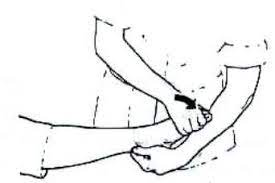
The patient should first be instructed by the therapist to assume a comfortable position, such as resting on the bed with a straight knee and their foot propped up off the bed. The physical therapist next uses a gentle pushdown to turn the foot such that the toes point outward from the body. Work out three times a day.
- Passive inversion
Ask the patient to first assume a comfortable position, such as resting on the bed with their foot propped up and their knee straight. In one session, complete this exercise ten times. Work out for a period of time a day.
- Passive eversion
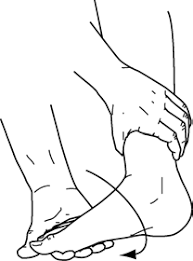
Initially, the patient should be instructed by the therapist to assume a comfortable position, such as resting on the bed with a straight knee and their foot elevated off the bed. Subsequently, the therapist slowly rotates the foot outward while preventing the leg from rotating. Ten times during the session, complete this exercise. Work out three times a day.
- Alphabet
They should only move their foot and ankles. When performing this exercise, try not to move your knee or even your hip excessively.
- Passive ankle dorsiflexion
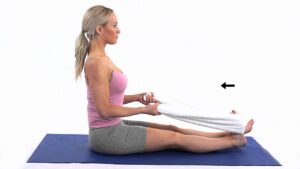
Next, slide the foot toward the face side by pulling back on the towel as the therapist holds each end in their hands.
- Passive toe extension
The patient then places one hand on the heel and the other on the toes, moving the toes as far up towards the tibia’s shin as is comfortable.
- Passive toe flexion
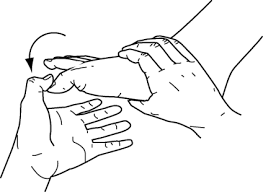
The therapist instructs the patient to start by sitting in a chair and placing the foot that needs to be exercised across the knee of the opposite side. The patient next places one hand on each toe and the bottom of the heel, extending the toes as far as is comfortable towards the tibia’s shin.
- Passive toe extension against the step
Next, slightly lean against the wall while applying pressure to the toes and pressing them back toward the tibia’s shin, but do not maintain this position. Do three sessions of this workout each day, ten times a session.
Active-assisted Ankle range of motion exercises
These exercises, as their name implies, entail the patient or the therapist providing some assistance. The majority of the action is performed by the patient, but in order to finish it correctly, some assistance is given.
The majority of the action is performed by the patient, but in order to finish it correctly, some assistance is given. The majority of the time, this limited range of motion is the time, this limited range of motion is the consequence of pain or weakness caused by bumps, bruises, falls, or even more serious injuries. When first practicing these exercises, the patient may experience severe pain and weakness. However, with time, there is a good chance that the patient’s range of motion around the ankle joint will gradually and permanently improve.
Advantages
- Improve the ankle joint’s range of motion.
- Increase the effectiveness of your movements.
- Increase self-reliance.
- Eases the pain in the ankles.
- Enhance and preserve joint integrity.
Active-assisted range of motion exercises
- Active-assisted dorsiflexion
First, instruct the patient to lie in a comfortable position, such as a straight kneeling position on the bed with their foot propped up off the bed. If the patient is unable to move their foot in between movements, the therapist will help them achieve full dorsiflexion. Do three sessions of this workout in a single day, or ten times in a single session.
- Active-assisted plantarflexion
Ask the patient to get into a comfortable posture before starting, such as resting on the bed with their foot propped up and their knee straight. If the patient is unable to move their foot between movements, the physical therapist will help them attain their complete plantarflexion range. Do three sessions of this workout each day, ten times a session.
- Active-assisted inversion
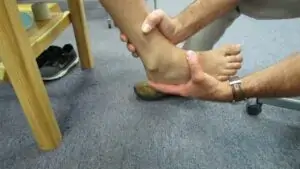
This can be as simple as lying on the bed with their foot propped up and their knee straight. Following that, the patient is instructed by the physical therapist to move their foot inward as far as they are able to. If the patient is unable to move their foot inward between movements, the therapist helps them achieve the complete range of inversion. Do three sessions of this workout each day, ten times a session.
- Active-assisted eversion
Instruct the patient to lie down in a comfortable posture, such as on the bed with their foot propped up and their knee straight. The patient is then instructed by the therapist to extend their foot as far as they are able to. If the patient is unable to extend their foot during the action, the physical therapist helps them achieve their full range of eversion. Do three sessions in a day, ten repetitions of this exercise per session.
- Active assisted toe flexion
Subsequently, the therapist lays one hand on the tips of the toes and the other on the bottom of the foot. If the patient is unable to bend their toes during this exercise, the therapist will help them achieve full toe flexion.
- Active-assisted toe extension
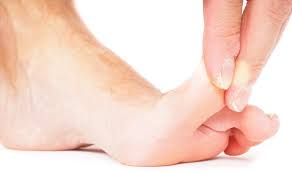
Ask the patient to first assume a comfortable position, such as resting on the bed with their foot propped up and their knee straight. Subsequently, the therapist directs the patient to move their toes upward, meaning as close to their face as possible. If the patient is unable to extend their toes between movements, the physical therapist assists the patient in achieving a complete range of toe extension.
Active Ankle range of motion exercises
Since the patient is fully capable of performing these exercises, the patient performs them most of the time.
This can be painful, uncomfortable, or even hindering, but it is most helpful in cases of small injuries like an ankle sprain that do not significantly limit the ankle’s range of motion.
Active range of motion exercises
- Toe extension
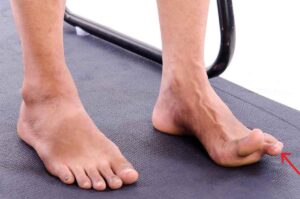
Plantar fasciitis, a condition that causes pain in the heel when walking and trouble lifting the toes, can be prevented or treated using toe extension exercises. The affected foot should then be placed on the healthy thigh. For 30 seconds, hold. Perform three rounds in a session.
- Active dorsiflexion range of motion exercise
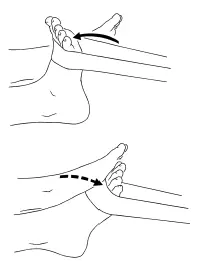
Ask the patient to settle into a comfortable posture, such as reclining on the bed, before starting. The patient should next be instructed by the physical therapist to bend their foot toward their face, or upward, for as long as they are able to. The hold would not be taken at the terminus. Ten times a session, repeat. Work out three times a day. Increase the amount of repetitions from 10 to 15 or 20 in a single session as your muscles get stronger.
- Active plantar flexion range of motion exercise
The patient should next be instructed by the therapist to move their foot away from their body, meaning that they should go as far as they can without being held at the end. Work out three times a day. Increase the amount of repetitions from ten to fifteen or twenty every session as your muscles get stronger.
- Active ankle inversion range of motion exercise
First, instruct the patient to lie down on the bed or find a comfortable position. The patient should then be instructed by the physical therapist to move their foot inside for as long as they can, but at the conclusion, they shouldn’t be placed on hold. Work out three times a day. Increase the amount of repetitions from ten to fifteen to twenty every session as the muscles get stronger.
- Active ankle eversion range of motion exercise
First, instruct the patient to lie down on the bed or find a comfortable position. The patient should then be instructed by the therapist to move their foot outside for as long as they can, but at the conclusion, they shouldn’t be put in hold. Ten repetitions per set, per session. Work out three times a day. Increase the amount of repetitions from 10 to 15 to 20 in a single session as your muscles get stronger.
- Alphabet
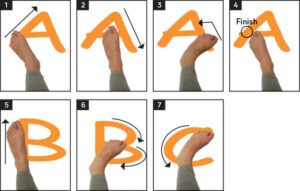
Practice writing in both uppercase and lowercase letters, and remember to move from the ankle rather than the hip joint. Repeat ten times in a single session, but don’t stop at the finish. Perform three sessions per day.
FAQs
Which kind of support is ideal for weak ankles?
Ultimately switching to ankle support that is semi-rigid. The Aryse stability ankle system is a wonderful solution for preventing ankle sprains.
What illness results in ankle weakness?
Ankle weakness can also result from a few medical disorders. The most prevalent ones are osteoarthritis and diabetes. Lastly, wearing inappropriate footwear like high heels or unsupportive shoes is another factor.
What is the standard for ankle mobility?
Your ankle is flexible and has excellent dorsiflexion if you can back up five inches or more away from the wall. Work on ankle mobility if you are less than three inches, or if there’s a big discrepancy between the two sides.
How is the range of motion in the ankle measured?
As an alternative, the rater can measure ankle dorsiflexion range of motion (ROM) with an inclinometer by simply identifying the base of the fifth metatarsal in a non-weight-bearing posture or the tibial tuberosity for consistent inclinometer placement in a weight-bearing position1,6,8.
How is ankle mobility tested?
Dorsiflexion In The Ankle Forever and Ever
Now, calculate the maximum distance the planted foot can travel from the wall without the rear heel coming off the ground.
What does limited ankle range of motion mean?
What is ankle equines, or ankle motion restriction? The ability to move the top of the foot toward the front of the leg is limited in people with ankle equines. You can have an equinus in one or both feet.
What degree of dorsiflexion is typical?
Dorsiflexion: Pain and range-of-motion workouts
Dorsiflexion measuring more than 12.5 cm is regarded as typical functioning.
How may one become more dorsiflexed?
Ankle dorsiflexion can and will be improved by focusing on strengthening and toning the gastrocnemius and soleus muscles of the calf. Stretching, soft tissue massage, ultrasound, heat, cupping, and instrument-assisted soft tissue mobilization are a few of the often-used techniques for this.
What governs the movement of the ankle?
Ankle muscles
Your ankle movements are controlled by the muscles in your legs and feet. Among them is the: Gastrocnemius muscle.
Is it possible to treat ankle weakness?
persistent instability in the ankle
In addition, it results in edema, prolonged ankle pain, and a shaky ankle sensation. When nonsurgical measures fail to alleviate severe instability, surgery becomes the next best option.
What is an ankle’s normal range of motion?
For typical walking, one needs a range of 24° to 30° combined motion (dorsiflexion and plantar flexion), 37° for climbing stairs, and 55° for descending steps.
References
- Prajapati, N. (2022a, May 3). Ankle Range of motion exercise: Active, Active assisted, Passive exercise. Samarpan Physiotherapy Clinic. https://samarpanphysioclinic.com/ankle-range-of-motion-exercise/

